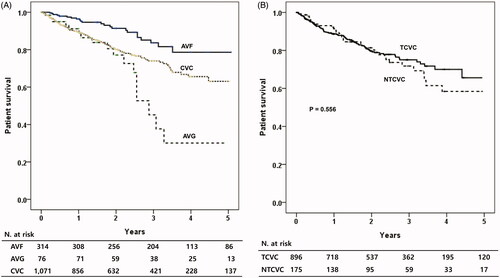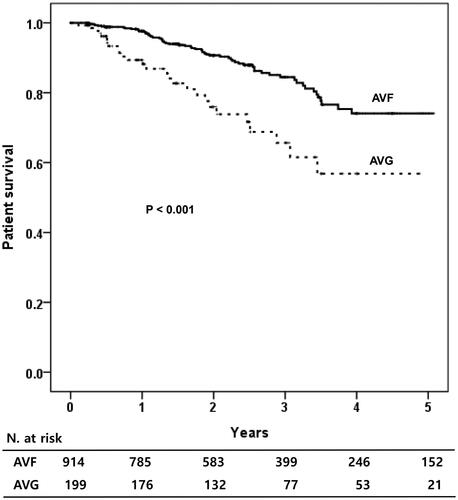Figures & data
Table 1. Baseline characteristics according to the types of initial vascular access.
Table 2. Comparisons of baseline characteristics between TCVC and NTCVC.
Table 3. Baseline characteristics according to types of permanent vascular access.
Figure 1. Patients’ survival according to the types of initial vascular access. (A) Comparisons among the AVF, AVG and CVC patients. (B) Comparison between NTCVC and TCVC. AVF: arteriovenous fistula; AVG: arteriovenous graft; CVC: central venous catheter; NTCVC: non-tunneled CVC; TCVC: tunneled CVC.

Figure 2. Patients’ survival according to the types of permanent vascular access. AVF: arteriovenous fistula; AVG: arteriovenous graft.

Table 4. Health-related quality of life (HRQOL) and Beck’s depression inventory (BDI) scores at 3 months after dialysis beginning according to the types of initial vascular access.
Table 5. Health-related quality of life (HRQOL) and Beck's depression inventory (BDI) scores at 12 months after dialysis beginning according to the types of initial vascular access.
Table 6. Frequency of annual hospitalization according to the types of vascular access.
